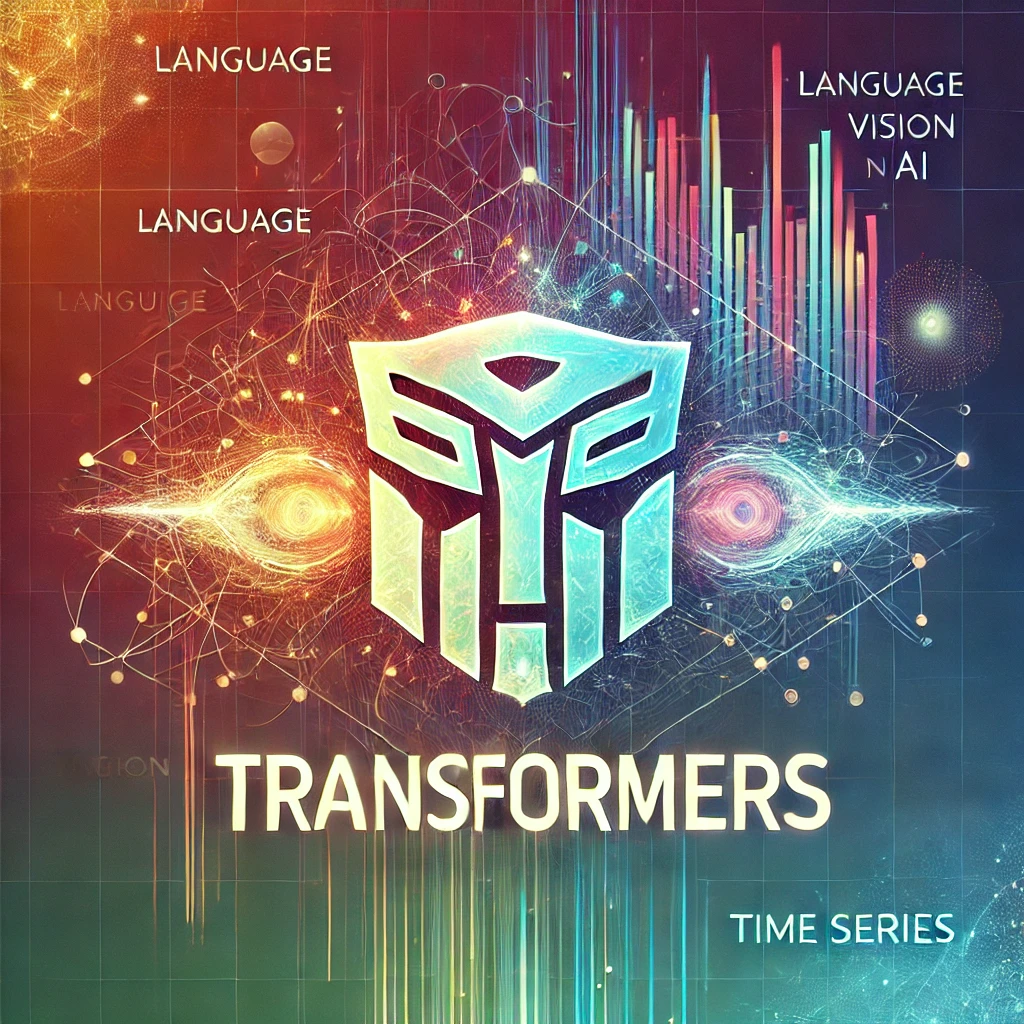Exploring the Rise of Transformers and Their Impact on AI: A Deep Dive Introduction: The Revolution of Transformer Models The year 2018 marked a significant turning point in the field of Natural Language Processing (NLP), often referred to as the “ImageNet moment for NLP.” Since then, transformers have become the dominant architecture for various NLP tasks, largely due to their ability to process large amounts of data with astonishing efficiency. This blog post will take you through the history, evolution, and applications of transformer models, including breakthroughs like GPT, BERT, DALL·E, CLIP, Vision Transformers (ViTs), DeepSeek and more. We’ll explore both the theoretical concepts behind these models and their practical implementations using Hugging Face’s libraries. The Rise of Transformer Models in NLP In 2018, the introduction of the GPT (Generative Pre-trained Transformer) paper by Alec Radford and OpenAI was a game-changer for NLP. Unlike earlier methods like ELMo and ULMFiT, GPT used a transformer-based architecture for unsupervised pretraining, proving its effectiveness in learning from large datasets. The architecture involved a stack of 12 transformer modules, leveraging masked multi-head attention layers, which allowed it to process language efficiently. This model was revolutionary because it could pretrain on a vast corpus of text and then fine-tune on various NLP tasks with minimal modifications. Soon after GPT, Google introduced BERT (Bidirectional Encoder Representations from Transformers), which changed the game even further. While GPT used a unidirectional approach (only learning from left to right), BERT took advantage of a bidirectional technique. This allowed BERT to understand the context of words in a sentence more effectively by looking at both directions (left and right). BERT was trained using two key tasks: Masked Language Model (MLM): This involves randomly masking words in a sentence and training the model to predict them. It allows the model to develop a deep understanding of context. Next Sentence Prediction (NSP): The model is trained to predict whether one sentence follows another, which aids in tasks like question-answering. The success of BERT led to the rapid rise of transformer-based models for all types of language tasks, including text classification, entailment, and question answering. BERT’s architecture made it easy to fine-tune for a wide variety of NLP tasks by simply adjusting the output layer. Scaling Up Transformers: From GPT-2 to Zero-Shot Learning In 2019, OpenAI followed up on GPT with GPT-2, which was a much larger model containing over 1.5 billion parameters. This model demonstrated impressive capabilities in zero-shot learning, meaning it could perform tasks it wasn’t explicitly trained for with little or no fine-tuning. The model’s ability to generalize to new tasks showed that transformers could extend their utility far beyond what was originally expected. As the competition to create larger models escalated, Google introduced Switch Transformers in 2021, which scaled up to over a trillion parameters. These models exhibited exceptional performance on NLP tasks and paved the way for even more ambitious projects, such as OpenAI’s DALL·E and CLIP. Multimodal Models: DALL·E, CLIP, and Beyond Multimodal models like CLIP and DALL·E brought a new dimension to transformers by extending their capabilities beyond text into the realm of images. CLIP, introduced by OpenAI, was trained to match text captions with images, enabling it to learn highly effective image representations from textual descriptions. This allowed CLIP to excel at tasks like image classification using simple text prompts like “a photo of a cat.” DALL·E, on the other hand, took it a step further by generating images directly from text prompts. This model could create realistic images from descriptive text, such as generating a picture of “a two-headed flamingo on the moon.” Both models represented a significant leap forward in combining language and vision tasks, highlighting the versatility of transformer architectures. In 2022, DeepMind’s Flamingo model built upon this idea, introducing a family of models that worked across multiple modalities, including text, images, and video. Soon after, DeepMind unveiled GATO, a multimodal model capable of performing a wide range of tasks, from playing Atari games to controlling robotic arms. Transformers in Vision: The Emergence of Vision Transformers (ViT) While transformers initially dominated NLP, their potential in computer vision was quickly realized. The Vision Transformer (ViT) was introduced in October 2020 by a team of Google researchers, who showed that transformers could be highly effective for image classification tasks. Unlike traditional convolutional neural networks (CNNs), which use a fixed grid of pixels to process images, ViTs break down images into smaller patches and treat these patches like sequences of words. This method is similar to how transformers process text sequences, making ViTs highly versatile. By splitting images into patches and processing them using attention mechanisms, ViTs surpassed the performance of state-of-the-art CNNs on the ImageNet benchmark. However, one of the challenges with ViTs is that they lack the inductive biases that CNNs have. CNNs are inherently designed to recognize patterns like edges or textures, while ViTs need larger datasets to learn these patterns from scratch. Efficient Transformers: DistilBERT and DINO Despite the power of large transformers, their size and computational requirements have led to research on more efficient models. DistilBERT is a prime example of this. Developed by Hugging Face, it uses a technique called knowledge distillation, where a smaller model (the student) is trained to mimic the behavior of a larger model (the teacher). This allows DistilBERT to achieve 97% of BERT’s accuracy while being 60% faster and requiring less memory. Another notable innovation in efficient transformers is DINO, a vision transformer that uses self-supervised learning. DINO is trained without any labels and uses a technique called self-distillation, where the model is duplicated into two networks: one acting as the teacher and the other as the student. DINO ensures high-level representations and prevents mode collapse, where both networks would otherwise produce the same output for every input. This allows it to excel at tasks like semantic segmentation with high accuracy. Transformer Libraries: Hugging Face’s Ecosystem Today, using transformer models is easier than ever, thanks to platforms like Hugging Face. Hugging Face’s Transformers Library provides pre-trained models for a variety of tasks, including NLP and vision tasks, which can be easily fine-tuned on custom datasets. The pipeline() function simplifies the process of deploying these models for tasks like sentiment analysis, text classification, and sentence pair classification. For example, Hugging Face offers models like DistilBERT, GPT, and ViT, all available through their model hub. This allows researchers and developers to experiment with state-of-the-art models without having to implement everything from scratch. Bias and Fairness in Transformers One of the ongoing challenges with transformer models is bias. These models are often trained on large, real-world datasets, which can reflect and amplify societal biases. For example, models may show biases towards certain nationalities, genders, or even languages, depending on the data they were trained on. In some cases, the training data might contain harmful associations, such as a negative sentiment towards certain countries or cultures. Mitigating bias in AI is an active area of research, and it’s essential to evaluate models across different subsets of data to ensure fairness. For instance, running counterfactual tests (e.g., swapping the gender in a sentence) can help identify if the model is biased towards a specific demographic. Developers must be cautious when deploying these models into real-world applications to avoid causing harm. The Future of Transformers: Unsupervised Learning and Generative Networks The final frontier for transformers is unsupervised learning and generative models. Unsupervised models like autoencoders and Generative Adversarial Networks (GANs) are becoming more prominent, allowing models to learn without explicit labels. Autoencoders compress data into lower-dimensional spaces, making it possible to generate new content, such as images or text, based on learned representations. Transformers have also influenced the development of GANs for tasks like image generation. Models like DALL·E 2 are examples of how transformers, combined with generative techniques, can produce high-quality images based on text prompts. This opens up new possibilities for creative applications of AI, from generating artwork to creating realistic virtual environments. The Future is Transformer-Powered The evolution of transformers, from GPT and BERT and now even DeepSeek , has revolutionized how we approach AI and machine learning. Their versatility, scalability, and effectiveness across multiple domains, from language understanding to vision, make them the dominant architecture in modern AI. As the field continues to evolve, we can expect to see more efficient, fair, and creative applications of transformers, driving innovation in industries ranging from healthcare to entertainment. And with platforms like Hugging Face making these models accessible, the future of AI is brighter than ever. Understanding the Relationship Between Transformers and LLMs Transformers and Large Language Models (LLMs) are closely linked concepts in the field of AI, yet they represent different aspects of the technology. Transformers Transformers are a type of architecture introduced in 2017 that uses a mechanism called self-attention. This allows the model to process input data in parallel, making it faster and more efficient than earlier architectures like RNNs (Recurrent Neural Networks). Transformers are used in many AI applications, including natural language processing (NLP), vision tasks, and multimodal tasks that combine different types of data, such as text and images. Large Language Models (LLMs) LLMs (Large Language Models), such as GPT-4, BERT, and Llama2, are specific models built using the transformer architecture. These models are trained…
The Transformer Model Revolution from GPT to DeepSeek & goes on How They’re Radically Changing the Future of AI – Day 65




